Chrissy said, “Brand new football training jacket (my partners) 100% polyester. Accidentally flicked the cooker switch for a min and the jacket still in his shopping bag was on top. I have picked off the bits I can and material isn’t damaged underneath, only the Hardee’s parts are coming of in 1/2 mm bits with tweezers seems impossible using that method. What solvent can I use to melt plastic bag (one of the quality shiney thick one) but not affect polyester coat? It’s a new Tottenham jacket and he’s so cross with me cause it was so expensive. Do I need to save up for a new one? :(“
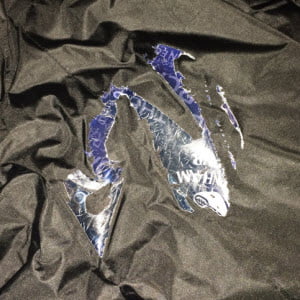 Plastic bags melt at a very low temperatures and quickly cool, which lets them adhere to any surface they touch while melting. However, removing them from some fabrics can be surprisingly easy. You may be able to simply peel the plastic off of the fibers, but if not or if you have a lot of plastic to remove, use the method below.
Plastic bags melt at a very low temperatures and quickly cool, which lets them adhere to any surface they touch while melting. However, removing them from some fabrics can be surprisingly easy. You may be able to simply peel the plastic off of the fibers, but if not or if you have a lot of plastic to remove, use the method below.
You Will Need:
- Brown paper bag
- An iron or hair dryer
Steps to Remove the Plastic:
- Get a brown paper bag or two pieces of any other kind of brown paper, such as kraft paper. Do not use any kind of paper other than brown. Do not use paper that has ink on it either, as the ink can transfer to the fabric.
- Go outside or to a well ventilated area with the supplies and damaged fabric item.
- Turn the iron on to the lowest heat setting. A hair dryer can be used instead if needed.
- Lay the fabric item out flat.
- Lay the bag or pieces of brown paper over the melted plastic area.
- Rub the warm iron over the paper. Do not let the iron go over the edges of the paper or you could damage the fabric. This is particularly true for polyester and nylon fabrics. If using a hair dryer instead of an iron, hold the hair dryer about six inches away from the paper, moving it around to heat the entire area where the plastic is located.
- Gently move the iron over the area until the plastic melts. Do not apply pressure as you do not want to force the melted plastic deeper into the fibers of the fabric.
- The paper will absorb and attach to the plastic. Once the plastic has melted, peel off the paper and the melted plastic will peel off along with it.
- If there is any excess, scrape it off while it is still warm with a plastic scraper, spoon, or dull knife. Do not touch the melted/warm plastic with your hand.
- Once all of the plastic is removed, clean the item as usual.
Additional Tips:
- If you allow the hot iron to go over the edges of the paper on polyester fabric, you could end up with shiny iron marks. It is best to avoid this outcome if at all possible, but if this happens, use the guide How to Remove Shiny Iron Spots from Polyester.
- Be especially careful with nylon fabrics or nylon blend fabrics, as nylon also can melt at very low temperatures. Use only the minimum amount of heat necessary to melt the plastic.


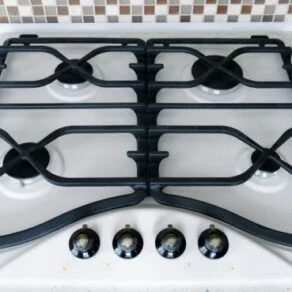
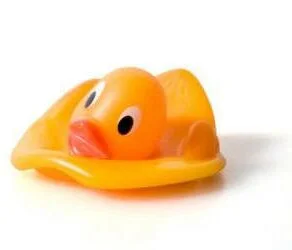

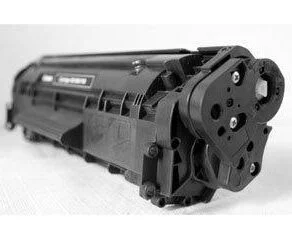
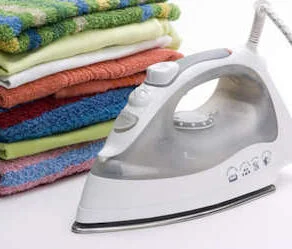


I have a $200 men’s dark pants, and they have several what looks like the plastic that comes on dry cleaned clothes. How do I remove it without damage to the pants?
Barbara,
The iron/paper method should not damage the pants. Only use the lowest setting on the iron. If the pants are heat sensitive, such as if they are nylon, use a hair dryer instead which will be even lower heat than an iron. If you want to avoid heat entirely, you can try using either oil (olive oil, etc.) or acetone nail polish remover. Test the acetone on a small hidden area first, such as an inside seam, to be sure it is safe for the fabric and wash the pants immediately afterward to remove the oil or acetone. Another option is to use a nail file to gently file off the plastic. You may want to test this on an inside seam as well to see how much filing is safe for the fabric. You can try pupling the fabric off with tweezers if it’s not very stuck. Good luck!
Source: How To Clean Stuff.net – How to Clean Burnt Plastic from a Glass Cooktop
Great read and tips! Can this method also be used to remove melted plastic on a satin lining? If so, how do I apply the alternative methods you mentioned?
Hi Quiana,
Satin is a bit more heat sensitive than other fabrics, however this method can still be used as it can be carefully ironed with medium/low heat. Use quick strokes with the iron and try to keep the iron on the bag rather than directly on the satin just for safe measure. Good luck!
Source: How to Clean Satin